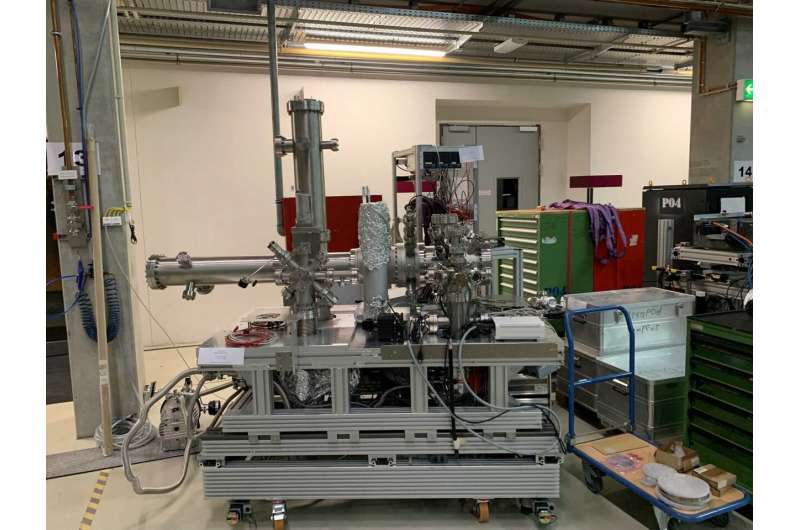This article has been reviewed according to Science X's editorial process and policies. Editors have highlighted the following attributes while ensuring the content's credibility:
fact-checked
trusted source
proofread
Test signal generator uses 'made-up' electrons to save researchers time

Working with a great deal of dexterity and concentration, Jingo Bozzini, an electronics engineer, solders the tiny legs of a chip onto the green circuit board. "Soldering isn't my strong suit," he grins. He's much more interested in programming the circuit on the chip, which was also the focus of his final practical exam last year.
As part of his individual practical work (IPA)—his final project—he and Yves Acremann from the Solid State Physics Research Group developed a test signal generator that simulates experimental data. This little silver box may look unremarkable, but it is of invaluable help in designing a novel microscope that will enable researchers to observe individual electrons.
'Taking photos' with X-ray flashes
ETH Zurich is one of a number of universities around the world that are involved in building this groundbreaking instrument. When completed, the k-microscope, as it is known, will be connected to the LCLS-II free-electron laser—a particle accelerator at Stanford that moves electrons in a slalom course so that they emit powerful X-ray flashes.
These X-rays are then directed at a specimen in the microscope, causing electrons to detach from the specimen. A detector at the end of the microscope captures these electrons and calculates their exit angle and time of flight. This data tells researchers more about the electronic properties of a specimen, such as a new semiconductor. The super-fast flashes can also be used to observe dynamic processes such as a chemical reaction.
"The test signal generator simulates the electrons hitting the detector," explains Acremann, a physicist. "It's connected to the detector electronics to program the software for the microscope. This step can be done from the comfort of an office." Bozzini's simulator enables researchers to develop the software while the microscope is still being built. This will save them a lot of time and money because the software will already be fully operational when the researchers connect the microscope to the particle accelerator.
Integrated into the research group
Apprentices also have to prepare a detailed schedule for their IPA. "Testing the generator and documenting the work took longer than planned," Bozzini recounts. This was mainly because he had written his work—as is common in research—in English and using LaTeX, a software program. That's not the only thing that makes Bozzini's work unusual: "This final project goes well beyond the basic skills of an electronics engineer," Acremann says. In January, Bozzini even managed to publish a scientific paper on the test signal generator in the Journal of Instrumentation—not an everyday achievement for an apprentice.
As an apprentice, Bozzini was fully integrated into the research group. "I was able to contribute to the group's output with my paper," he says. The close collaboration between researchers and apprentices is a hallmark of vocational training at ETH Zurich. The aspiring electronics engineers spend the first two years of their education in the electronics training lab, where they learn the basics of circuit technology, manufacturing and measuring technology, and programming. For the next two years, they do an apprenticeship within ETH—in a research lab, for example. "Especially in experimental physics, it's important that we have experts who can solve technical problems and implement things effectively," Acremann explains.
Although Bozzini thinks it's cool that his thesis made an important contribution to basic research, he remains modest: "That's my job—it's what I get paid for," he says. He doesn't yet know whether he would one day like to work in research himself. He's currently completing a one-year full-time vocational diploma. He has fond memories of his successful apprenticeship at ETH Zurich: after his IPA, he got to travel with Acremann to Hamburg, where the microscope is currently being set up. "That was an exciting experience for me. That's when I saw that my work can actually contribute to basic research," he says.
More information: J. Bozzini et al, Test signal generator for simulating electron events from a momentum microscope, Journal of Instrumentation (2023). DOI: 10.1088/1748-0221/18/01/P01014
Provided by ETH Zurich



















